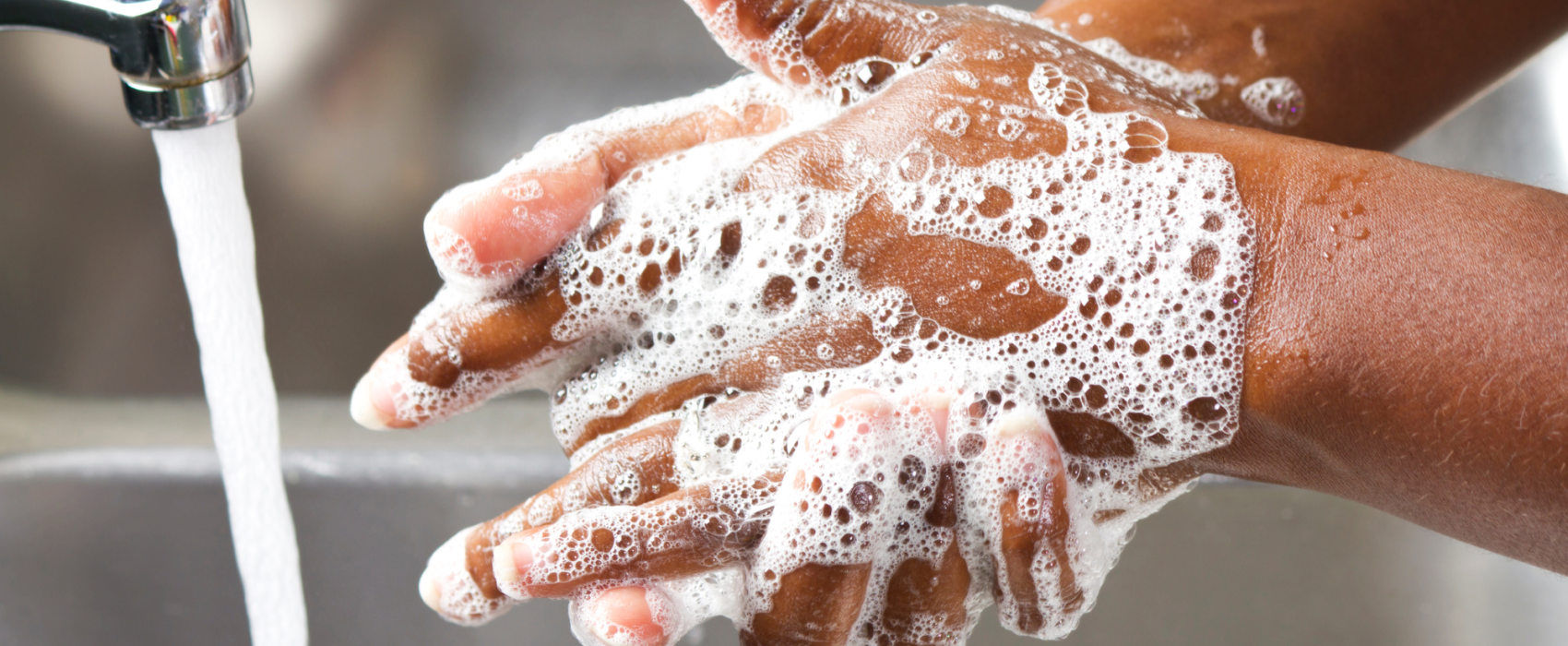Winter brings with it more than just frosty mornings and shorter days – it marks the start of flu season. Each year, as temperatures drop, illnesses such as colds, flu and other respiratory infections become more prevalent, spreading rapidly through schools, workplaces and public spaces. While vaccines and good hygiene practices play a significant role in reducing the spread of these illnesses, one of the simplest and most effective tools remains handwashing. Handwashing also helps to prevent the spread of Norovirus (known as the Winter Vomiting Bug).
Handwashing may seem like a basic habit, but its importance cannot be overstated. Properly washing your hands with soap and water is a powerful defence against the transmission of germs, including bacteria and viruses that cause illnesses like the flu, COVID-19 and norovirus. Here’s why this seemingly small act is so vital, particularly as we move into winter.
Germs and their spread
Germs are everywhere – on door handles, mobile phones, keyboards and even on surfaces that appear clean. During flu season, people often cough or sneeze into their hands or onto surfaces inadvertently transferring viruses to any areas they touch. Others come into contact with these surfaces and unknowingly transfer the germs to their own hands, which can then make their way into the body through the eyes, nose or mouth. Norovirus spreads where the hands are contaminated after using the toilet, and the hands touch surfaces or prepare food for others without being cleaned properly.
Handwashing breaks this chain of transmission. When you wash your hands, the soap helps to break down oil-based membranes surrounding bacteria and viruses. Scrubbing hands together also creates friction, which helps lift dirt and pathogens from the skin. Rinsing with water then helps to remove these germs from the skin.
Why handwashing matters more in winter
Handwashing is important all of the time but winter creates conditions that make the spread of germs more likely. People spend more time indoors in close proximity to others, whether at home, in the office or on public transport. This increased person-to-person and person-to-shared surface contact makes it easier for viruses to transfer from one person to another. Additionally, the tiny hairs that clear germs from the respiratory tract don’t work as well in cold conditions and the lower humidity means droplets with germs can persist in the air for longer and therefore spread further.
Handwashing becomes particularly important during this time because it helps to reduce the spread of germs in these crowded environments. The knock-on effect is increased protection for vulnerable populations, such as the elderly, young children and individuals with weakened immune systems, who are more likely to experience severe complications from illnesses like the flu.
How to wash your hands effectively
Handwashing with soap and water works by physically removing germs from the skin.
- Wet your hands with clean, running water (preferably warm) and apply enough soap to cover all hand surfaces.
- Rub your hands palm to palm to create a good lather.
- Interlace your fingers and rub your hands together, washing both the palms and backs of your hands in this manner.
- Wash your left thumb with your right hand and vice versa.
- Be sure to clean the backs of your fingers and fingernails by rubbing them in to the opposing palm.
- Rinse your hands thoroughly with clean running water. It's important to use running water to remove all traces of soap and loosened germs.
- Dry your hands completely with a clean towel or air dryer. Wet hands transfer viruses more easily, so drying is a crucial step in the handwashing process.
8. If using public toilets, try to avoid using the handles as you exit if you can – by instead using your sleeve, elbow or a paper towel or tissue. The handles can easily be easily contaminated by others who have not cleaned their hands properly. The entire handwashing process should take about 15-20 seconds. Remember, handwashing is especially important at key times, such as before eating or preparing food, after using the toilet, after blowing your nose, coughing or sneezing, after touching animals or animal waste and when caring for others.
Handwashing vs. hand sanitiser
While hand sanitiser is a convenient alternative when soap and water aren’t available, it should not be seen as a replacement for handwashing. Alcohol-based sanitisers can kill many germs but are less effective against certain viruses including Norovirus and do not remove dirt or grease. For optimal protection, washing your hands with soap and water is a better choice.

